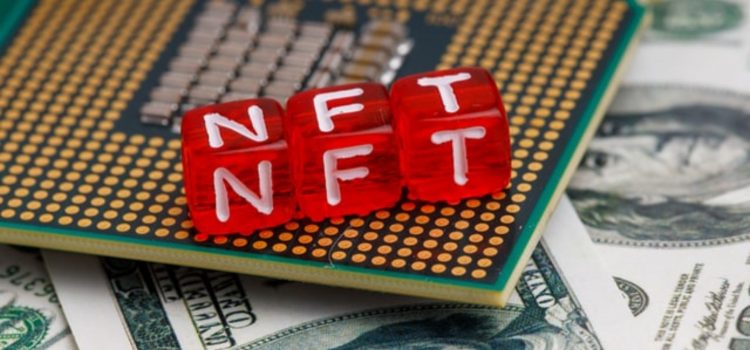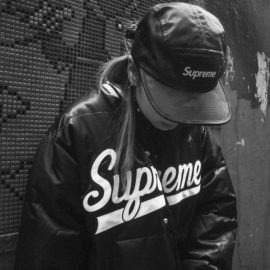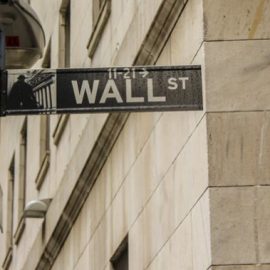

This article gives you a glimpse of what you can learn with Shortform. Shortform has the world’s best guides to 1000+ nonfiction books, plus other resources to help you accelerate your learning.
Want to learn faster and get smarter? Sign up for a free trial here .
What are NFTs and how do they work? What makes NFTs so valuable? How can a piece of art that can be screenshotted and viewed online for free now sell for millions? And, finally, are NFTs here to stay, or are they just another bubble waiting to burst?
If you are interested in learning about NFTs (non-fungible tokens), but struggle to get your head around what NFTs are and how they work, take comfort in the fact that you are not alone. Many people are baffled by the NFTs and their insane valuations, some breaking hundreds of millions of dollars.
In this ultimate guide to NFTs, we’ll demystify the NFT phenomenon by diving into its history, breaking down what NFTs are and how they work, and explaining the risks and potential benefits of this groundbreaking technology.
NFTs in a Nutshell
So, what are NFTs and how do they work? In the simplest terms, an NFT is a token of ownership of an asset. It can be both physical and digital. In the case of digital assets, what differentiates an NFT from a simple digital file is the ownership of the original work. To draw parallels with physical ownership, an NFT is like a certificate of ownership of the original Mona Lisa painting: everyone can buy a reproduced version, but there’s only one original.
Currently, NFTs are mostly being used for buying and selling digital art. Thanks to NFT technology, artists can sell their art directly to the buyer, without having to organize auctions and pay intermediaries. NFTs also incur royalties, so sellers receive a percentage of sales when their token changes hands.
Beyond digital art, NFTs have also proved to be an exciting arrival for investors. Although NFTs are not strictly speaking an asset class—but rather a certificate of ownership of an asset—they have shown enormous potential to appreciate in value over time. In 2017, for example, NFT CryptoPunk 1422 was purchased for $74, and then sold for $2 million four years later in October 2021.
In addition to the ROI gains, NFTs also grant investors special privileges. For example, Bored Ape Yacht Club, an NFT collection of 1000 unique and programmatically generated animated images that depict bored apes, grants investors access to members-only benefits such as collaborative graffiti board THE BATHROOM, along with other perks that can be unlocked through roadmap activation.
| What Are NFTs and How Do They Work? The actual term “NFT” was not coined until the advent of the ERC-721 standard, which was developed for exchanging gaming tokens. The ERC-721 is a protocol that encodes ownership, security, and other properties in metadata. Following the ERC-721, a number of NFT projects followed, the most noteworthy one being CryptoPunks, which set off the 2021 NFT craze by selling for a whopping $2 million dollars. Most NFTs reside on the Ethereum blockchain, although other blockchains now also support their own NFTs. Each NFT has a unique identifying code and built-in authentication to verify and transfer ownership. Owners can also add metadata and assign properties to the asset represented by the NFT. For example, artists can sign their artwork in the metadata. Finally, NFTs cannot be exchanged for one another, which is the whole premise of their nonfungibility. Fungible tokens are equal in value (e.g. one ether equals one ether), making it possible to use them as currency for conducting transactions. Non-fungible tokens can’t be used as currencies because they don’t equal one another. |
The Benefits of NFTs
Although the current craze around NFTs is around the tech’s use to connect artists with their audience, the technology has wider implications for businesses and the economy. Understanding what NFTs are and how they work, it’s easy to see additional applications.
Supply Chain Tracking
One potential use case of NFTs is tracking products throughout their journey along the supply chain—from manufacturing through delivery. Ernst & Young, one of the largest professional services networks in the world, has already developed such a solution (EY OpsChain Traceability) for Italian brewing company Peroni Brewery: a unique NFT identifier will be issued to each batch of beer and recorded on the Ethereum ledger for tracking purposes.
Authenticity Verification
NFT technology makes it possible to verify that an asset is one-of-a-kind, making it difficult to counterfeit it. This can be useful for verifying authenticity. For example, universities could issue degree certificates as NFTs which employers could use to verify their authenticity.
Another potential use case is verifying the authenticity of products such as medicines and supplements. Since an NFT entry can store an immutable record of the product’s movement through the supply chain, its authenticity can easily be verified by scanning a QR code.
Protecting Medical Records
Another potential use case of NFTs is giving people control of their medical records. With NFTs, patients’ medical data can be tracked, making it possible for patients to see where it goes. They can even choose to monetize it. Third parties that want to use medical data for research and development purposes will have to ask the owners for permission and reimburse them if permission is granted.
Cross-Chain Gaming
NFTs have the potential to revolutionize the gaming industry by introducing cross-platform usability of in-game assets. For example, when a gamer purchases an in-game asset (e.g. a weapon or an enhanced armor), they can only use it in that particular game. NFTs make it possible to use in-game assets across interconnected games, or even sell them for cryptocurrency, which has real-world value. Some gaming studios are already implementing the NFT gaming ecosystem. For example, Vietnamese studio Sky Mavis developed a game where players can convert in-game points to cash.
Potential Risks When Investing in NFTs
From an investor’s perspective, the biggest downside of NFTs is that it’s not possible to anticipate the future value of a token using any technical or fundamental indicators. The value of an NFT is solely determined by what someone is willing to pay for it, meaning you may not be able to sell it for a higher price than you bought it for, or sell it at all for that matter.
Furthermore, there is a risk of losing your access to the asset altogether because the actual asset (the digital file) is not stored inside the NFT. The NFT record stores the asset’s attributes as well as ownership details. You can think of it as an entry in a database containing the information about the asset and links to the URL where you can find it, but not the asset itself. This is problematic because URLs can easily vanish for a number of reasons. For example, the URL could be redirected somewhere else or the website’s hosting could be canceled.
Problems With How NFTs Work
Since NFTs are hosted on the Ethereum blockchain, which uses the “proof of work” framework that is extremely energy-intensive, there’s concern over the technology’s environmental impact. According to some estimates, the carbon footprint of an average NFT is equivalent to over a month’s worth of electricity for one EU resident.
| Proof of Work Explained Proof of Work (PoW) is a decentralized security algorithm that allows financial transactions to be processed in a peer-to-peer fashion, without a third-party regulatory authority. To that end, it requires members of the network to solve complex mathematical puzzles, which require a feasible yet not-insignificant amount of computational power. Solving puzzles allows users to add a new block of verified transactions to the blockchain. As a reward, the miners collect payment in the form of transaction fees. The premise is that using up such an inordinate amount of electricity makes it less profitable for someone to game the system, which incentivizes miners to keep the ledger accurate. As a result, processing Ethereum transactions expends an amount of energy that’s comparable to the yearly power consumption of Kazakhstan, and it generates a carbon footprint comparable to that of Libya. |
Some downplay the environmental impact of NFTs, arguing that they represent a relatively small amount of all Ethereum transactions. But thanks to NFTs, the value of Ethereum is surging, which could incentivize miners to plug in more machines to mine more Ether, thus increasing their carbon footprint.
To be sure, there are ways to offset the environmental damage from NFTs. One potential solution is to host NFT transactions on a less energy-intensive “proof-of-stake” blockchain. Unlike the proof-of-work protocol, where miners solve mathematical puzzles to verify transactions, the proof-of-stake system requires agents to deposit some of their own cryptocurrency tokens, which will serve as proof of their stake in keeping the ledger accurate. If they do anything to compromise the integrity of the ledger, they will lose those tokens. That eliminates the need for the computing power to solve puzzles, which, in turn, eliminates the carbon footprint.
Ethereum has been planning to move the entire system to the proof-of-stake protocol for several years now, but the transition has turned out to be more difficult to implement in practice. According to Vitalik Buterin, the founder of Ethereum, “That’s because building such a model is complex.”
There are also ways to bring down the NFT emissions and keep the ledger on the decentralized proof-work-system, such as hosting NFT transactions off the main Ethereum blockchain and even running Ether-mining machines on renewable energy. All of these potential solutions, however, have yet to see mass implementation in practice.
How to Buy NFTs
What is an NFT marketplace and how does it work? NFTs are bought for cryptocurrency (mainly Ethereum) on sites such as OpenSea, SuperRare, Nifty Gateway, and Rarible. As far as logistics go, buying NFTs is very simple: create an account, connect your crypto wallet, and browse available offers. Some listings allow you to buy immediately, whereas others will require you to place a bid. Once the transaction is complete, the NFT will be transferred into your crypto wallet.
If you’re buying a fixed-price NFT, you will also incur what is called a “gas fee.” Gas fees are essentially processing fees paid to miners of Ether for adding transactions to the Ethereum ledger. If you’re buying through an auction, the gas fee will be incurred by the seller.
Final Words
So, do you know what NFTs are and how they work? Hopefully, we’ve got you up to speed on the concept of NFTs—certainly an interesting and first-of-its-kind phenomenon. Beyond selling digital art, NFTs have been used to raise money for charity, fund businesses, and more. So, there are certainly some useful applications. As an investment, however, NFTs are highly speculative and risky. There is no guarantee that your NFT will appreciate in value. Furthermore, there is a risk you won’t be able to resell it even for a fraction of the original price. As mentioned, the value of an NFT is based solely on what someone is willing to pay for it, and there is always a chance no one would want to buy it back from you. Finally, there is a concern over the technology’s environmental impact.
All in all, NFTs are a relatively new invention, so we don’t yet know what the future holds in store. It could be just another trendy bubble waiting to burst, or it could revolutionize the world as we know it. Only time will tell.

Want to fast-track your learning? With Shortform, you’ll gain insights you won't find anywhere else .
Here's what you’ll get when you sign up for Shortform :
- Complicated ideas explained in simple and concise ways
- Smart analysis that connects what you’re reading to other key concepts
- Writing with zero fluff because we know how important your time is






